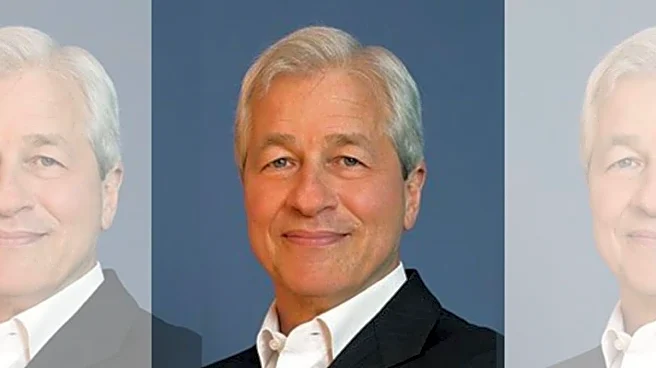President Donald J Trump has imposed a visa petition fee of US$ 100,000 for all new H-1B visa petitions filed from September 21, 2025. It is reliably understood that this fee is payable by the company
on filing of the petition. This is without any certainty of the petition being accepted and an H-1B visa being granted to the applicant employee. This prohibitive fee is imposed with the intention to make more jobs available for local talent, instead of companies hiring expats at a lower cost. When we observe the US Government’s decision from their lens with focus on their national interests, it is obvious that the US Government has done this with the intent to create more and more local jobs for local Americans.
According to various reports, India takes away a lion’s share of the total H-1B visas issued, which is believed to be around 70 per cent. There has been a perception within the US that the H-1B Visa route has been blatantly exploited by large IT outsourcing companies who leveraged the H-1B Visa system to cut salary costs by deploying low-skilled, low-cost Indian techies to US client sites as onsite postings. This was totally contradictory to the original intent of the policymakers to entice and invite highly skilled technocrats who would foster innovation. As a result, US citizens have started seeing Indian IT professionals as low-cost, less-skilled, commoditized labor, instead of highly skilled technocrats and innovators. This sentiment is further exacerbated with the perception that Indian IT Professionals are “stealing Americans’ jobs.”
In his efforts to revive the US economy and create jobs in the US for Americans, President Trump has embarked on his very Americanised “Atmanirbhar America” agenda which he calls MAGA. While this H-1B Visa fee has come as a shocker for innumerable aspirants who intend to enter the US and work there, it comes with a silver lining for the Indian economy and the fast-growing Global Capability Centers sector in India.
Global Capability Centers (GCCs) are captive offshore units of multinational technology, financial services, and even manufacturing corporations to outsource their Information Technology, Research and Development, Financial Analysis, Finance and Accounting Operations, Design, and other similar functions to an economical location outside the U.S. GCCs started coming to India in the early to mid-part of the first decade of the 2000s. In the last around 20-25 years, GCCs have evolved from pure cost centers to innovation hubs and even profit centers. According to the NASSCOM – ZINNOV Report, GCCs now employ around 1.9 million skilled and trained personnel in India. According to the same report, India now hosts approximately 1,700 GCCs who collectively generated revenues of around US$65 billion in FY2024. Industry experts believe that GCCs are growing at a growth rate of around 35-40 per cent.
According to various industry experts, total investment by global corporations in their GCCs is pegged at around US$ 20-25 billion. Information Technology, Technology, and Hardware sectors (including semiconductors) have attracted the maximum investment of around US$8-9 billion and account for approximately 40 per cent of the total investments. This segment includes AI, cloud, and software research and development. This is followed by the Banking, Financial Services, and Insurance (BFSI) sector that accounts for approximately one-fifth of the investment, which would be around US$ 4-4.5 billion. Manufacturing sectors including engineering services that include design, etc, account for approximately 15 per cent share in total investments and have created jobs in automotive, aviation and aerospace, and other hi-tech sectors and segments of manufacturing. Other sectors like Consulting and Professional Services like Strategy Consulting, Accounting and Finance Process Outsourcing, etc, account for around 10 per cent of total investments, followed by Pharmaceuticals, Healthcare, and Life Sciences, that account for around 8 per cent of total investments.
GCCs as a business segment covering all of the aforementioned sectors in industry and services are anyway expected to grow exponentially. This is primarily on the back of global corporations focusing on cost cutting by offshoring their manpower and innovation requirements at places where the talent pool is easily and amply available and to reduce hassles arising from migration, higher costs in developed economies, etc. The NASSCOM-ZINNOV report was released long before President Trump made this announcement of restraining the influx of highly skilled immigrants in the US. According to the said report, GCCs could see an investment of US$ 10-15 billion in the next 3-5 years, compared to an investment of around US$ 20 billion in 20-25 years. This is a huge jump. From around 6,500 leadership roles currently in place, new investments are expected to create around 30,000 more leadership roles. It was then believed that around 200-300 US firms would set up their GCC operations in India, predominantly in the Tech and Finance Sectors. This in turn was expected to create around 0.5 million jobs with a room for returnees to take up leadership roles. Within the Tech sectors, the said report expected critical jobs in AI and automation to come in GCCs set up in India. Then the report estimated a revenue potential of US$ 110 billion by 2030, up by 70 per cent from 2025 revenues of US$ 65 billion.
However, now with this regulatory black swan event created by President Trump, India’s potential of growing its GCC business has increased exponentially, as a significantly high number of H-1B applicants’ jobs would be offshored to India itself. Various industry experts expect additional investments of US$5-8 billion in the expansion of existing GCCs of global Big Tech majors like Google and Microsoft and financial giants like JP Morgan. It is believed that a significant sum could be invested in GCCs focusing on AI labs and Data Centers. Industry experts believe that India’s share in GCCs operating worldwide is expected to increase from around 50 per cent as of now to around 60-65 percent in the next few years, due to this action by President Trump.
In other words, a knee-jerk reactionary decision by President Trump to pacify his MAGA supporters and keep them rallied behind him and his revolutionary slogan of “Make America Great Again” is a blessing for India to expand its role in the global innovation and high-tech research and development ecosystem by attracting GCCs in India. Right regulatory environment and proactive government policies would come in handy in giving the much-required impetus to this emerging sector that will help propel the next level of growth of the Indian economy in the Manufacturing 4.0 and Manufacturing 5.0 environment and ecosystem. India needs to now work on leveraging the opportunity offered on the platter by President Trump to benefit from major industrial revolutions in the 21st century coming from Manufacturing 4.0 and Manufacturing 5.0.
The author is a Chartered Accountant and author of “Diagnosing GST for Doctors” published by CNBC Books18. He tweets from @sumeetnmehta. Views expressed in the above piece are personal and solely those of the author. They do not necessarily reflect News18’s views.

/images/ppid_a911dc6a-image-175871561260161746.webp)



/images/ppid_a911dc6a-image-175854383847820718.webp)
/images/ppid_59c68470-image-175856003347614419.webp)


/images/ppid_59c68470-image-175854754484857811.webp)
/images/ppid_a911dc6a-image-175853392945584380.webp)
/images/ppid_59c68470-image-175864505526015306.webp)
/images/ppid_a911dc6a-image-175862962751975718.webp)